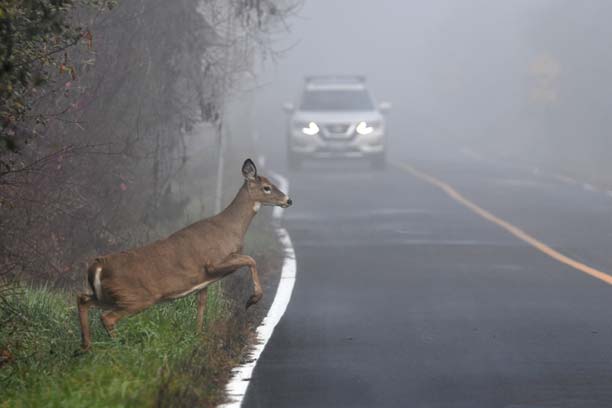Understanding the Risks of Animal Collisions

Understanding the risks of animal collisions is crucial for ensuring road safety. Car accidents involving animals can result in severe injuries or fatalities for both humans and wildlife. It is important to be aware of the potential dangers and take preventative measures to avoid such incidents.
Risks associated with animal collisions

Animal collisions pose significant risks for both humans and wildlife. These accidents can result in severe injuries or fatalities, damage to vehicles, and financial burdens for drivers. It is crucial to take preventive measures to avoid such encounters.
Factors that increase the likelihood of critter encounters

Factors that increase the likelihood of critter encounters include proximity to wildlife habitats, roads passing through wildlife corridors, time of day (dawn and dusk), and presence of nearby water sources.
Common Critters to Watch Out For

Animals commonly involved in collisions include deer, raccoons, squirrels, and birds. These critters are often attracted to roadsides due to vegetation and easy access to water sources.
Animals commonly involved in collisions

include deer, raccoons, squirrels, and birds. These critters are often attracted to roadsides due to vegetation and easy access to water sources.
Specific behavioral patterns that pose risks

Specific behavioral patterns that pose risks include animals darting across roads, mating season for certain species, and nocturnal animals being more active during nighttime hours. These behaviors increase the chances of collisions.
Tips for Avoiding Animal Collisions

- Stay alert and watch for signs indicating areas with high wildlife activity.
- Reduce speed, especially at dusk and dawn when animals are most active.
- Scan the sides of the road for any movement or eyeshine from animals.
- Use high beams when there is no oncoming traffic to increase visibility.
- If an animal is on the road, slow down and honk your horn to scare it away.
- Do not swerve abruptly to avoid hitting an animal, as it can lead to losing control of the vehicle.
- Utilize animal detection systems and adaptive cruise control if available in your vehicle.
- Be cautious of animal crossing signs and slow down in designated areas.
- Maintain a safe distance from the vehicle ahead to allow for sudden stops if necessary.
- Stay in the center lane when driving on multi-lane roads to reduce the risk of animal collisions.
Driving strategies to minimize critter encounters

Drivers can reduce the risk of critter encounters by staying alert, reducing speed, using high beams at appropriate times, and honking to scare animals away. Swerving should be avoided, and animal detection systems can be utilized if available.
Technological aids for detecting wildlife on roads
Technological aids can help drivers detect wildlife on roads and prevent collisions. These include animal detection systems that use infrared sensors or radar to detect and alert drivers of nearby animals.
Ensuring Road Safety for Wildlife

Ensuring road safety for wildlife is crucial to protect both animals and drivers. This includes maintaining wildlife corridors and implementing initiatives to prevent collisions and promote coexistence. Collaborative efforts are necessary to create a safe environment for animals and humans on the road.
Importance of maintaining wildlife corridors
Maintaining wildlife corridors is crucial for the conservation of biodiversity. These corridors connect fragmented habitats, allowing animals to move freely and access essential resources, promoting genetic diversity and ensuring long-term survival of species. Wildlife corridors also reduce the risk of animal collisions on highways by providing a safe passage for animals to cross busy roads. By protecting and enhancing these corridors, we can preserve and safeguard our wildlife populations.
Initiatives to protect animals and prevent collisions

Various initiatives have been implemented to protect animals and prevent collisions. These include the installation of wildlife crossing signs, fencing along highways, and the construction of wildlife underpasses and overpasses. Organizations and government agencies also work together to educate the public on the importance of wildlife road safety and promote responsible driving practices.
Dealing with a Critter Encounter
When encountering an animal on the road, it is important to prioritize safety. Drivers should slow down, remain calm, and avoid swerving. If a collision is unavoidable, it is best to keep control of the vehicle and contact the appropriate authorities and wildlife rescue organizations.
Safety tips when encountering animals on the road
When encountering an animal on the road, drivers should prioritize safety by slowing down, remaining calm, and avoiding swerving. If a collision is unavoidable, they should keep control of the vehicle and contact the appropriate authorities and wildlife rescue organizations.
Proper ways to respond to critter encounters

When encountering an animal on the road, drivers should prioritize safety by slowing down, remaining calm, and avoiding swerving. If a collision is unavoidable, they should keep control of the vehicle and contact the appropriate authorities and wildlife rescue organizations.
Conclusion and Resources
In conclusion, avoiding animal collisions on the road requires drivers to be vigilant and prepared. By following the tips and strategies mentioned in this article, drivers can minimize the risks and ensure the safety of both themselves and wildlife. For additional information and resources on wildlife road safety, individuals can refer to organizations such as the National Wildlife Federation and the Wildlife Roadkill Prevention Society.
Recap of key strategies to avoid animal collisions

Drivers can minimize the risk of animal collisions by following key strategies such as staying alert, reducing speed, using high beams at night, and avoiding swerving. These measures can help ensure the safety of both drivers and wildlife on the road. Remember to always prioritize safety and be prepared for critter encounters.
Additional resources and organizations for wildlife road safety

There are several resources and organizations dedicated to promoting wildlife road safety. These include the National Wildlife Federation, Defenders of Wildlife, and The Wildlife Society, which provide information and support for conservation efforts and strategies to reduce animal collisions.